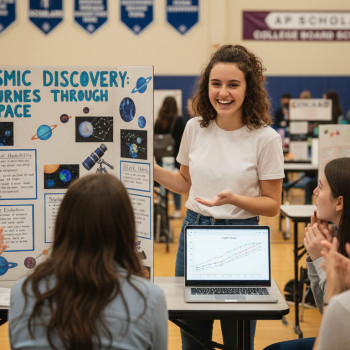Welcome — Why This Matters to Twin Cities Students and Families
If you or your student are navigating the AP landscape in the Minnesota Twin Cities, you’re in the right place. This article blends practical steps, local context, and study-smart strategies to help students align their coursework with AP expectations, especially around Computer Science and the social sciences that often fall under course codes like CSE/CBS. Think of this as a friendly roadmap — full of examples, a simple table to compare options, and human advice you can actually use.

What “CSE/CBS AP Alignment” Means — Plain and Simple
AP alignment is about making sure what you learn in school maps well to what’s tested on AP exams. In the Twin Cities context, that often means coordinating district course offerings, elective choices, and independent prep so students build the right skills in time for the AP test date. CSE (Computer Science Education) and CBS (sometimes used as shorthand in districts for courses like Contemporary Behavioral Studies or similar social science electives) represent two areas where alignment makes a big difference: both are content-rich, skill-heavy, and highly prized by selective colleges.
Who Should Read This
- High school students planning AP coursework in Computer Science or social sciences.
- Parents who want to understand course sequencing, exam readiness, and resource choices.
- Counselors and educators looking for student-friendly talking points and scheduling ideas.
Start With the End in Mind: Your AP and College Goals
Before you pick classes, ask yourself these three simple questions:
- Which AP exams would best reflect my strengths and college plans? (Computer Science A, Computer Science Principles, AP Psychology, AP Government, AP Statistics, etc.)
- How will a given AP score translate into college credit or placement at my target schools?
- What’s a realistic timeline given my current coursework, extracurricular load, and stress levels?
Answering those will help you prioritize. For example, if you want to major in computer science or engineering, AP Computer Science A (programming-focused) or AP Computer Science Principles (broader computational thinking) should be front and center. If you’re drawn to social sciences, AP Psychology or AP U.S. Government can open up advanced placement opportunities and demonstrate academic breadth.
Course Sequencing: A Practical Twin Cities-Friendly Plan
A common, sensible sequence for a motivated Twin Cities student might look like this:
- 9th Grade: Foundations — Algebra I/Geometry, Intro to Computer Science or Exploratory Social Science
- 10th Grade: Build — Algebra II/Precalculus, Computer Science Principles or Honors Social Studies
- 11th Grade: AP Year 1 — AP Computer Science A or AP Psychology, AP Language or AP Calculus if ready
- 12th Grade: AP Year 2 — AP Statistics, AP Government, AP Computer Science Principles, or a second AP in your area
That’s a template; every student’s path should be customized to their strengths and goals. The key is intentionality: choose classes that reinforce AP skills (writing, data analysis, programming, critical reading) rather than simply chasing more AP labels.
Real-World Example
Consider Maya, a Twin Cities junior who loves coding but was hesitant about AP Computer Science A. She took Computer Science Principles in 10th grade, which built conceptual fluency. In 11th grade she enrolled in AP Computer Science A while working with a tutor to strengthen Java basics and problem-solving strategies. The combination of school coursework + targeted 1-on-1 guidance helped her earn a competitive score — and she felt confident applying to selective colleges where she hoped to major in CS.
How to Align Classroom Experience to AP Exam Skills
Alignment is both macro (course selection) and micro (how you study inside each class). Here are practical, test-smart habits to build:
- Practice with AP-style questions regularly, not just before the test.
- Write timed responses to develop concise argumentation for free-response questions.
- For coding exams, build small projects that reflect common AP paradigms — arrays, loops, functions, and algorithmic thinking.
- Use cumulative review sessions to connect discrete units — AP exams test synthesis more than isolated facts.
Tip: Turn Classwork Into AP Prep
When a teacher assigns a lab, an essay, or a programming assignment, frame it through the AP lens: “Which AP skills does this build?” Then intentionally practice the related exam task. This small mindset shift converts everyday assignments into targeted preparation time.
Study Rhythms That Work — Weekly and Monthly
Instead of marathon cram sessions, thoughtful rhythms beat stress and build retention. Here’s a weekly cycle to try:
- 2–3 focused study sessions (45–60 minutes) on new material from class.
- 1 practice exam question set (30–40 minutes) — mix multiple-choice and free-response.
- 1 synthesis session — review notes, create one-page summaries, and practice interleaving topics.
Monthly, schedule a full-length practice exam under timed conditions and treat it like a dress rehearsal: review errors slowly and convert mistakes into targeted mini-lessons.
Sample Table: Comparing AP Course Options and What They Emphasize
| AP Course | Key Skills Emphasized | Best For | Typical Twin Cities Path |
|---|---|---|---|
| AP Computer Science A | Java Programming, Algorithmic Thinking, Problem Solving | Future CS Majors, Students Who Enjoy Coding | Intro CS → CS Principles → AP CS A (11th grade) |
| AP Computer Science Principles | Computational Thinking, Data Analysis, Project-Based Work | Students Exploring CS Broadly, Interdisciplinary Interests | Intro CS → AP CSP (10th–11th grade) |
| AP Psychology | Critical Reading, Research Interpretation, Memory of Concepts | Social Science Enthusiasts, Pre-Health Students | Honors Biology/Social Studies → AP Psychology (11th–12th grade) |
| AP Statistics | Data Interpretation, Probability, Real-World Modeling | Students Who Like Data or Business; Complementary to CS | Algebra II → Precalculus → AP Statistics (11th–12th grade) |
How Local Resources in the Twin Cities Can Help
The Twin Cities benefit from strong public schools, engaged counselors, and plenty of extracurricular opportunities — coding clubs, research programs, and community internships that deepen understanding beyond the classroom. Use these local resources to add real projects to your academic story: hackathon participation, capstone projects, or a psychology research volunteer position are concrete experiences that reinforce AP skills.
Guidance for Parents: How to Support Without Micromanaging
- Set consistent study time and a calm workspace.
- Encourage balance — sleep and social time matter for performance.
- Ask open-ended questions about coursework: “What were the big ideas today?”
- Consider targeted help early — a few tailored tutoring sessions can prevent snowballing confusion.
When and How to Use Personalized Tutoring
Not every student needs long-term tutoring. The most effective model is targeted, flexible support that fills gaps and builds exam strategy. That’s why many Twin Cities families pair classroom learning with short stretches of personalized tutoring in the months leading up to the exam.
Sparkl’s personalized tutoring model — 1-on-1 guidance, tailored study plans, expert tutors, and AI-driven insights — fits this approach well. Imagine a student who understands concepts in class but struggles with AP-style free-response timing: a short run of 1-on-1 sessions can focus solely on timed practice, rubrics, and exam-specific feedback. The result is efficient progress without burnout.
Practice Tests and Feedback: The Engine of Improvement
Practice tests are most valuable when you do two things consistently: simulate real conditions, and follow each test session with focused feedback. Don’t just score the test — analyze misses, identify patterns (for example, weak multiple-choice strategy or recurring free-response pitfalls), and translate those into the next week’s study plan.
How to Turn Errors into Action
- Keep an error log: question type, why you missed it, and a short corrective action.
- Schedule micro-lessons: 20–30 minute focused sessions on the weak skill.
- Re-test on similar problems within a week to check for retention.

Balancing AP Ambition and Well-Being
Ambition drives achievement, but burnout ruins momentum. Plan for restorative habits: regular sleep, exercise, and social time. When stress rises, small adjustments — a slightly reduced AP load or swapping one AP for an honors course that better matches learning style — can preserve performance without derailing college goals.
Examples of Short-Term Plans Based on Different Starting Points
Because every student’s baseline is different, here are three short-term, 12-week plans you can adapt.
Plan A: Strong Foundation, Need Exam Strategy (Student already versed in content)
- Weeks 1–4: Weekly timed question sets, error log, and targeted rubrics review.
- Weeks 5–8: Two full-length practice exams (biweekly), focused review sessions driven by error patterns.
- Weeks 9–12: Final polishing — flash reviews, mixed practice, stress-management routines.
Plan B: Good in Class, Weak Test Skills
- Weeks 1–4: Build test-taking stamina with short timed sections; begin one-on-one tutoring to develop strategies.
- Weeks 5–8: Expand to full practice tests; tutor works on weaknesses in free-response composition or coding efficiency.
- Weeks 9–12: Final simulated tests and review; focus on timing and confidence techniques.
Plan C: Behind on Content
- Weeks 1–4: Intensive content catch-up: daily short lessons and concept summaries.
- Weeks 5–8: Apply concepts with problem sets; begin regular practice-question sessions.
- Weeks 9–12: Shift focus toward exam simulation and error correction; additional tutoring if needed.
Common Pitfalls and How to Avoid Them
- Too many APs without mastery — depth beats breadth when aiming for top colleges.
- Ignoring free-response practice — many APs weigh these heavily and students often under-prepare.
- Overreliance on passive review — active problem solving, teaching concepts, and timed practice work best.
- Waiting too long to get help — early, focused intervention prevents last-minute panic.
Measuring Progress — What Success Looks Like
Success isn’t just a number on a score report, though that’s part of it. Here are concrete markers that show meaningful progress:
- Consistent improvement on practice test sections over several weeks.
- Ability to explain core concepts aloud or teach peers — a strong sign of mastery.
- Improved timing and fewer careless errors in timed practice.
- Higher confidence during classroom assessments and less last-minute anxiety.
Final Thoughts — Make the Journey Yours
Aligning CSE/CBS coursework with AP expectations in the Twin Cities is a mix of smart course choices, regular practice, and occasional targeted help. The best plans are flexible — they grow with your student. Whether it’s a school counselor’s plan, an extracurricular project, or a tailored tutoring run, the goal is to make AP work for you, not the other way around.
If you’re exploring tutoring options, short, personalized bursts of 1-on-1 guidance (like Sparkl’s model) often deliver the highest return: tailored study plans, expert tutors who understand exam rubrics, and AI-driven insights that point to what matters most. Combine that with steady classroom work and thoughtful pacing, and you’ll be in a strong position to achieve both strong AP scores and the deeper learning that colleges value.
One Last Piece of Advice for Parents and Students
Keep the conversation open. Celebrate small wins, normalize setbacks as learning moments, and remember that strong college applications are built on sustained curiosity and real engagement — not checkbox accomplishments alone. When AP prep is thoughtful and humane, it becomes more than a test strategy: it becomes preparation for meaningful college work and a lifelong love of learning.
Good luck — and remember: steady, intentional effort beats frantic intensity every time. You’ve got this.
























No Comments
Leave a comment Cancel